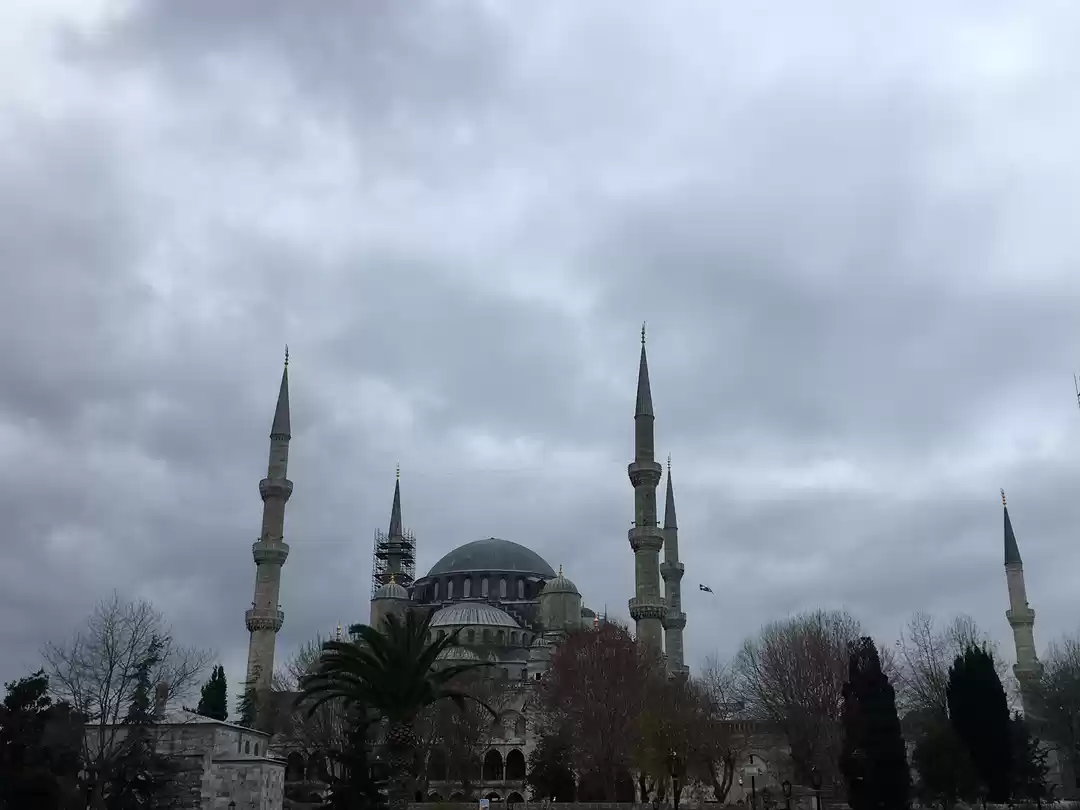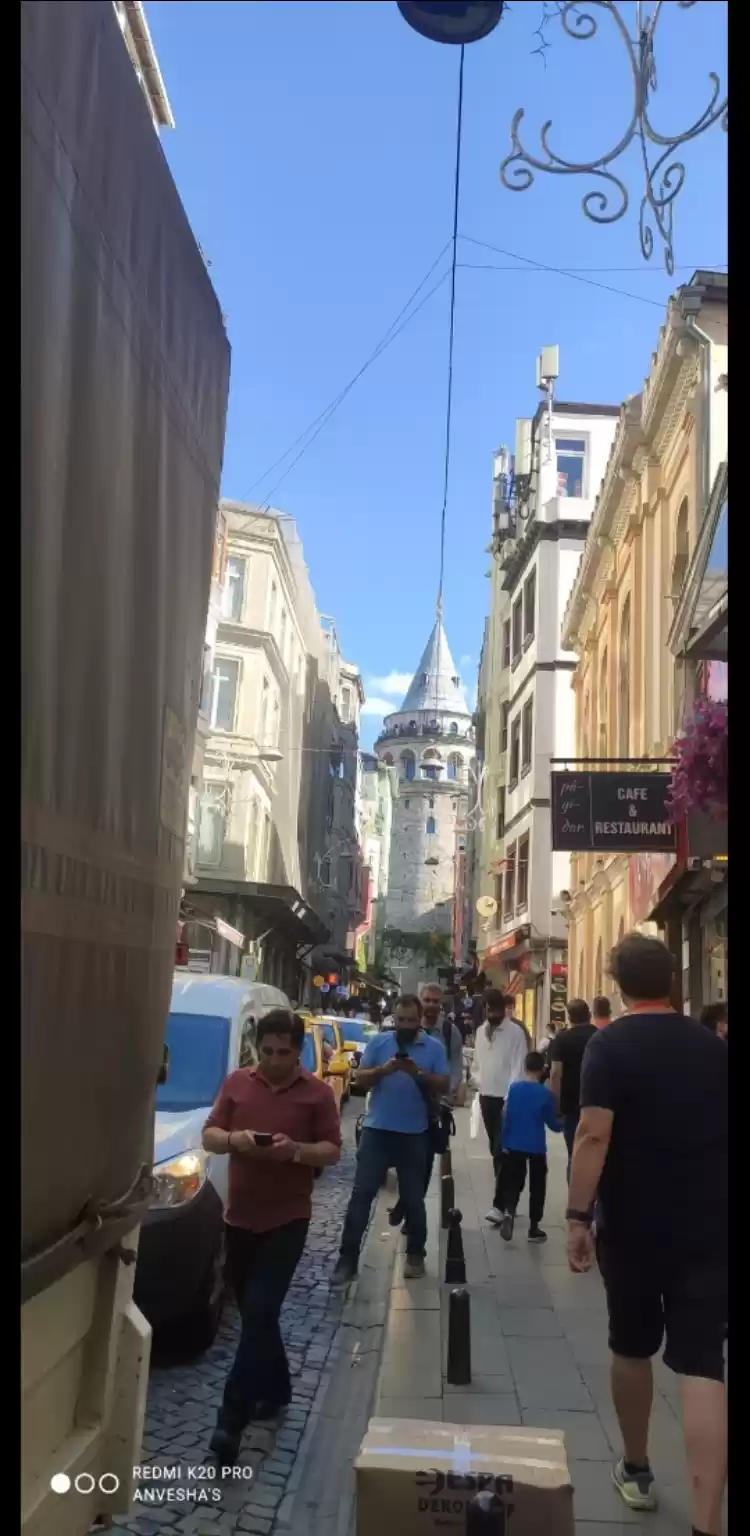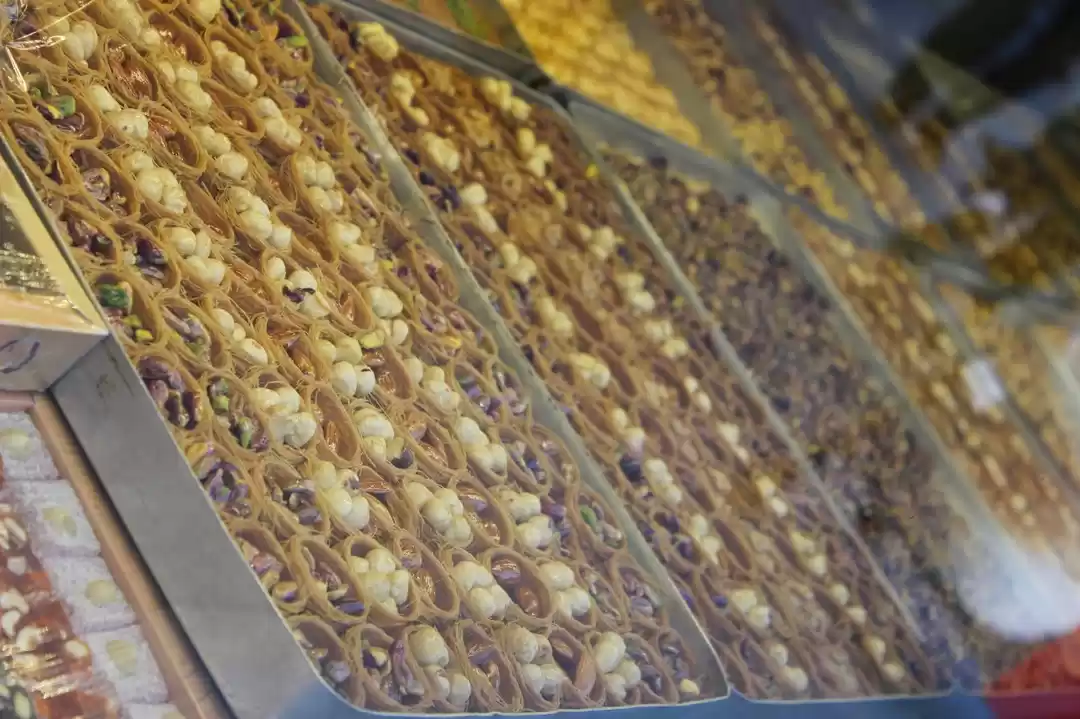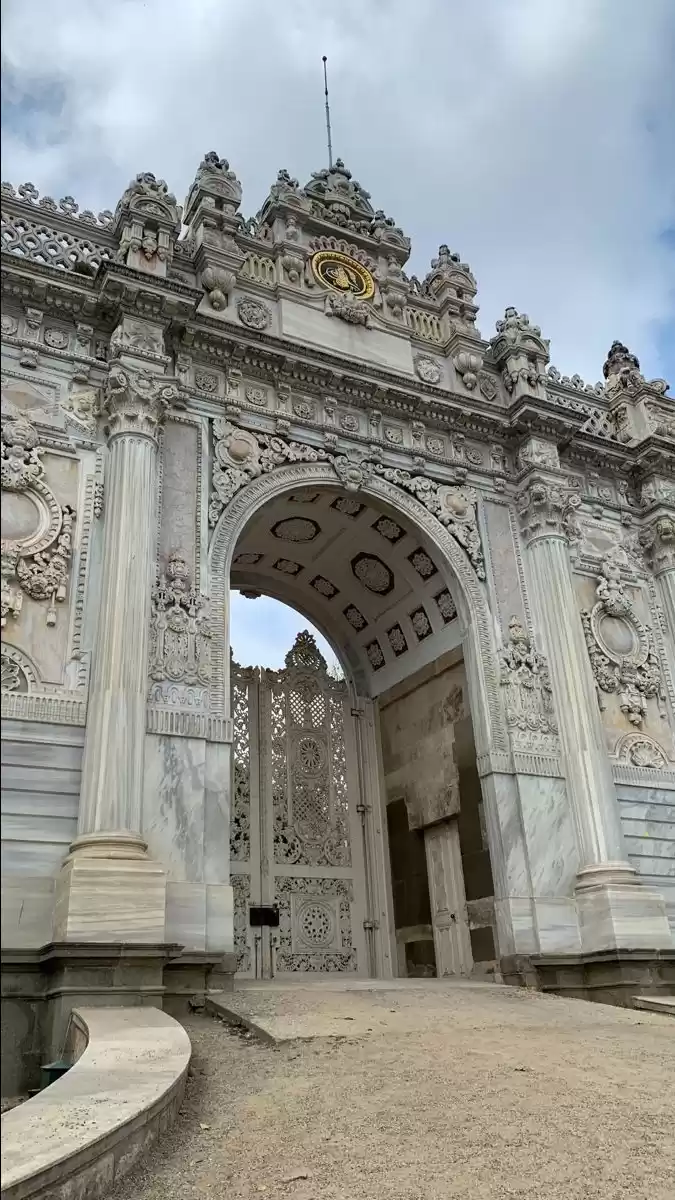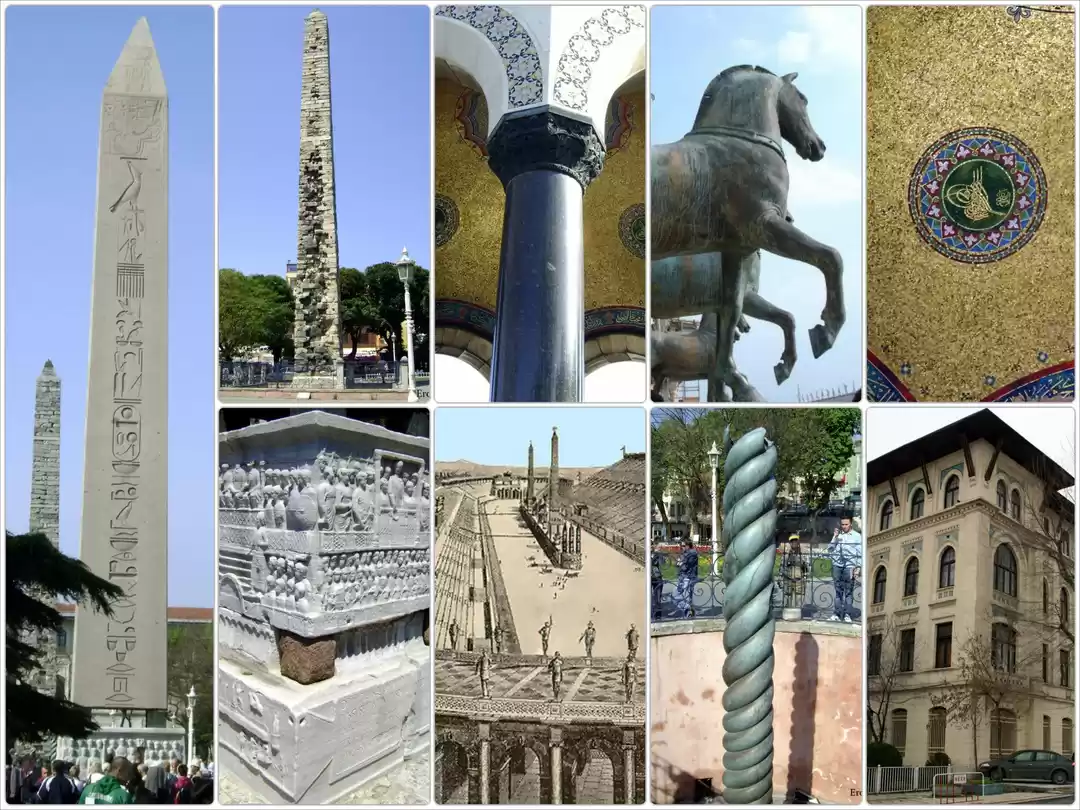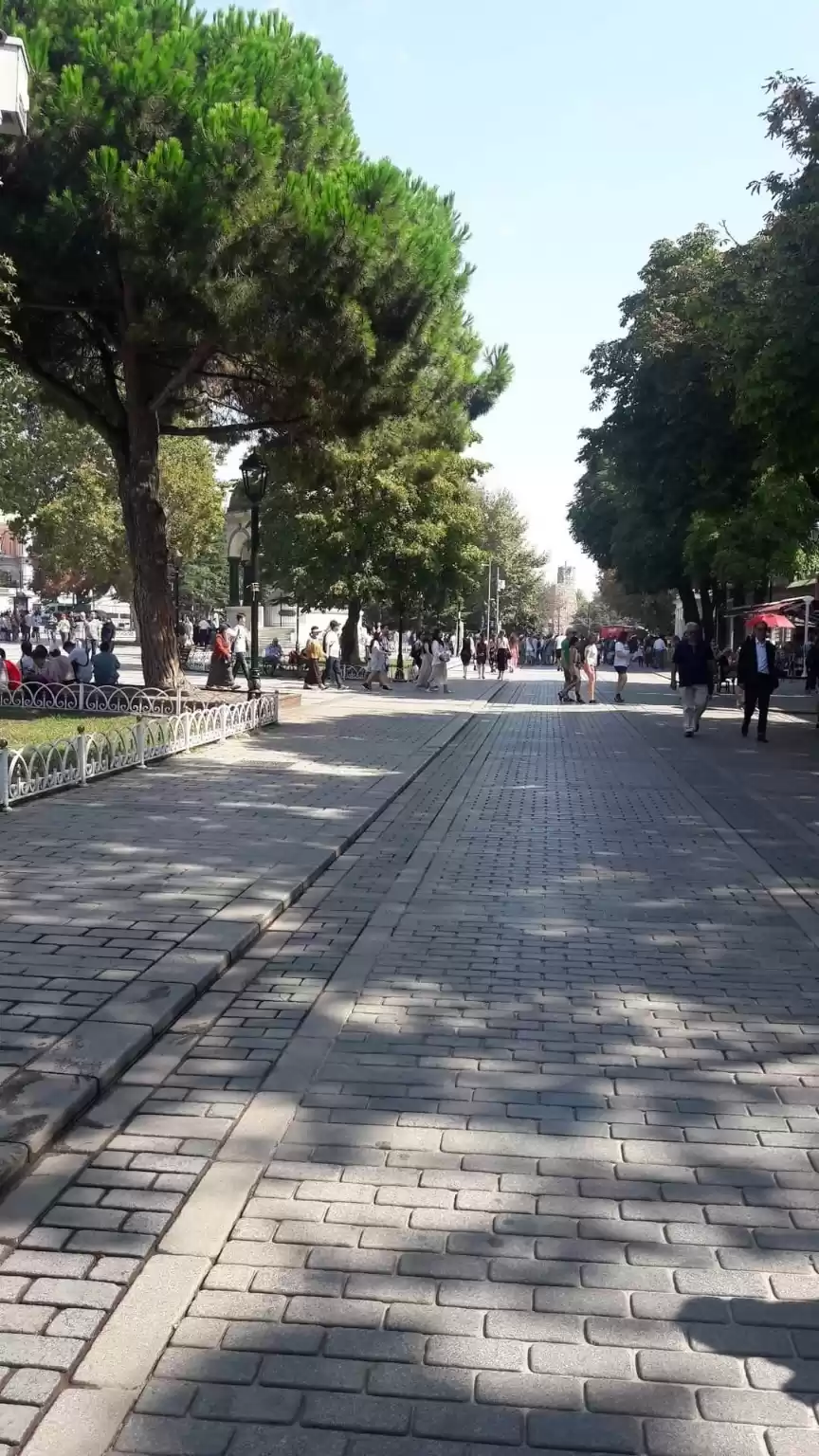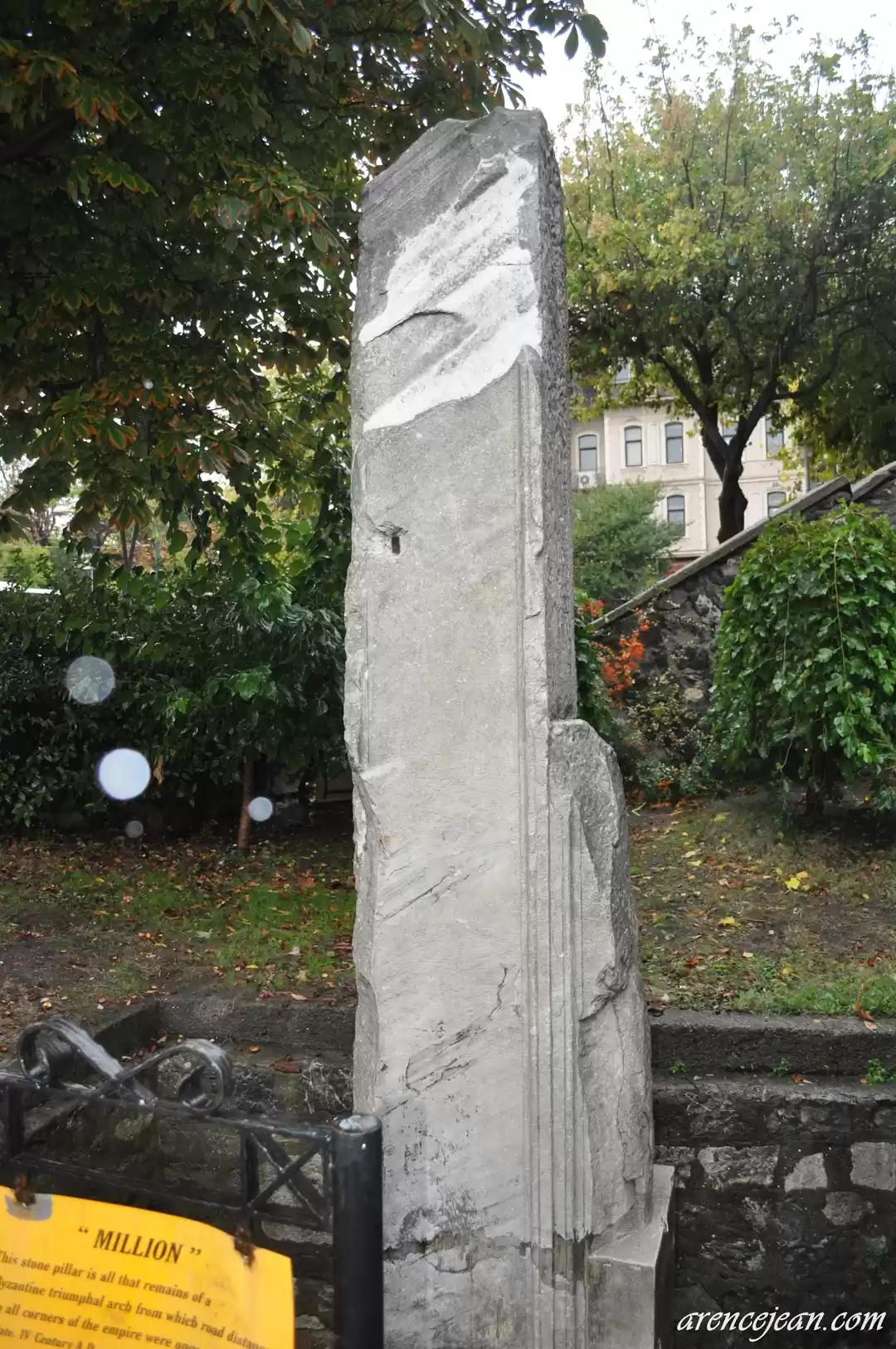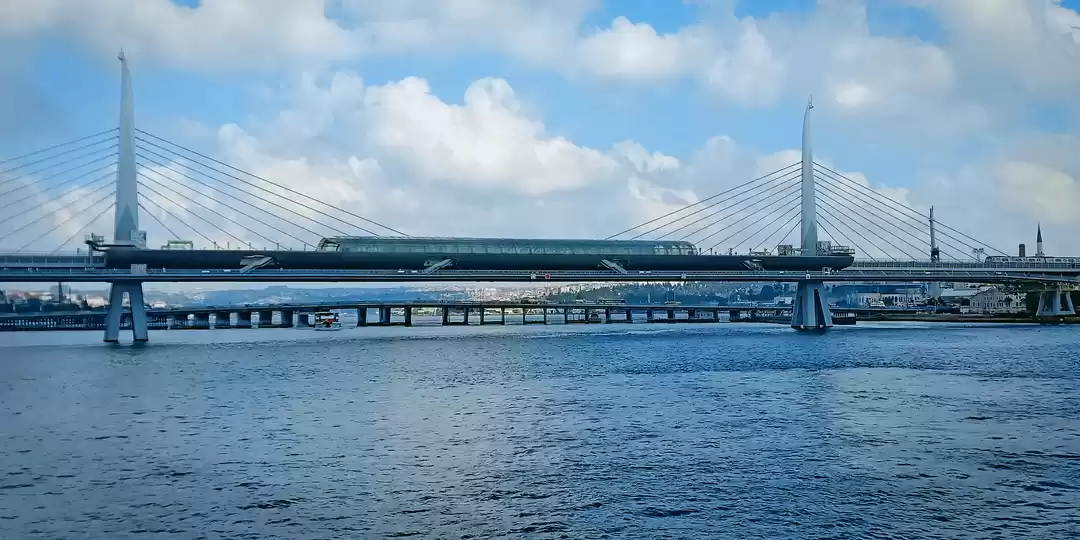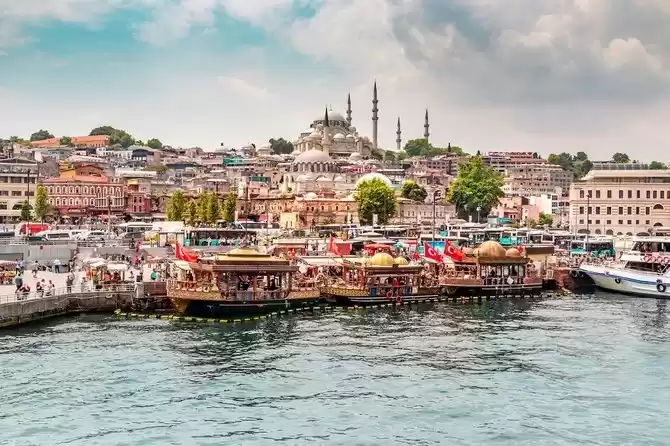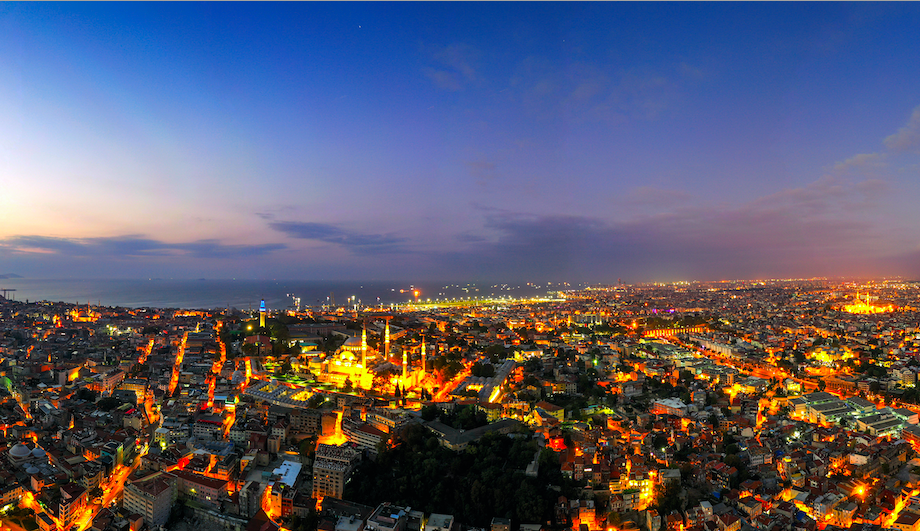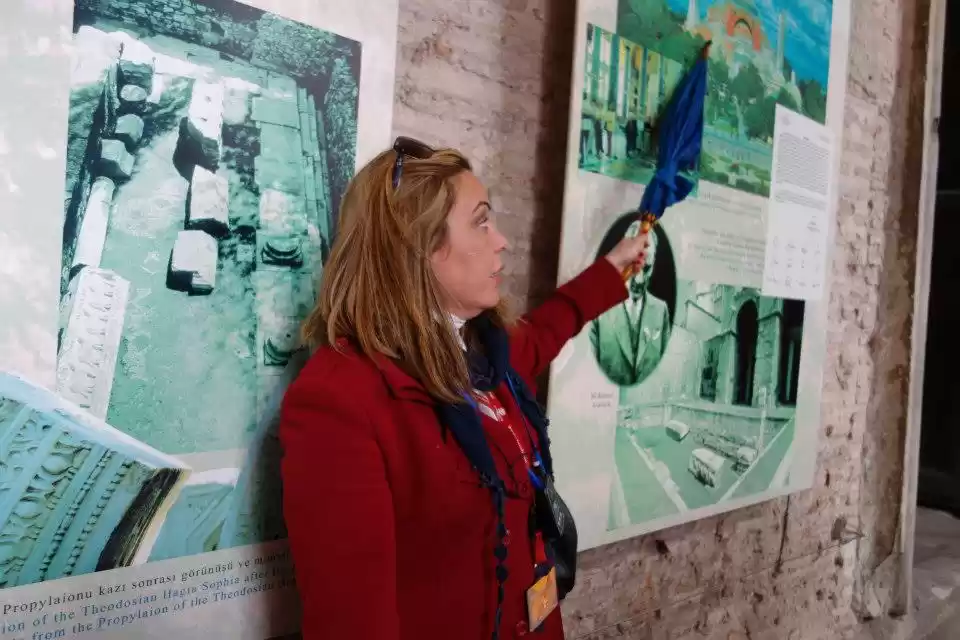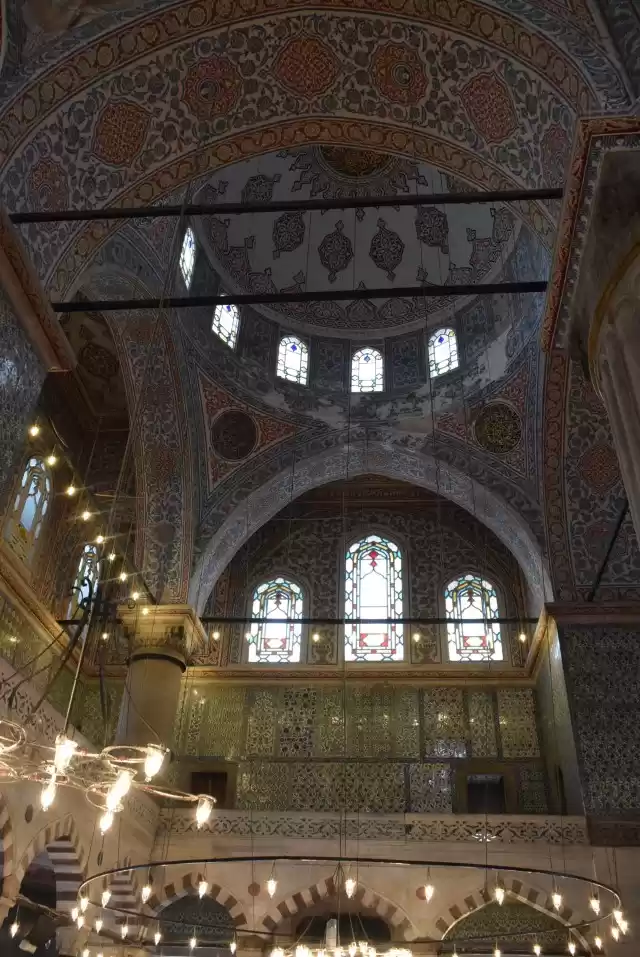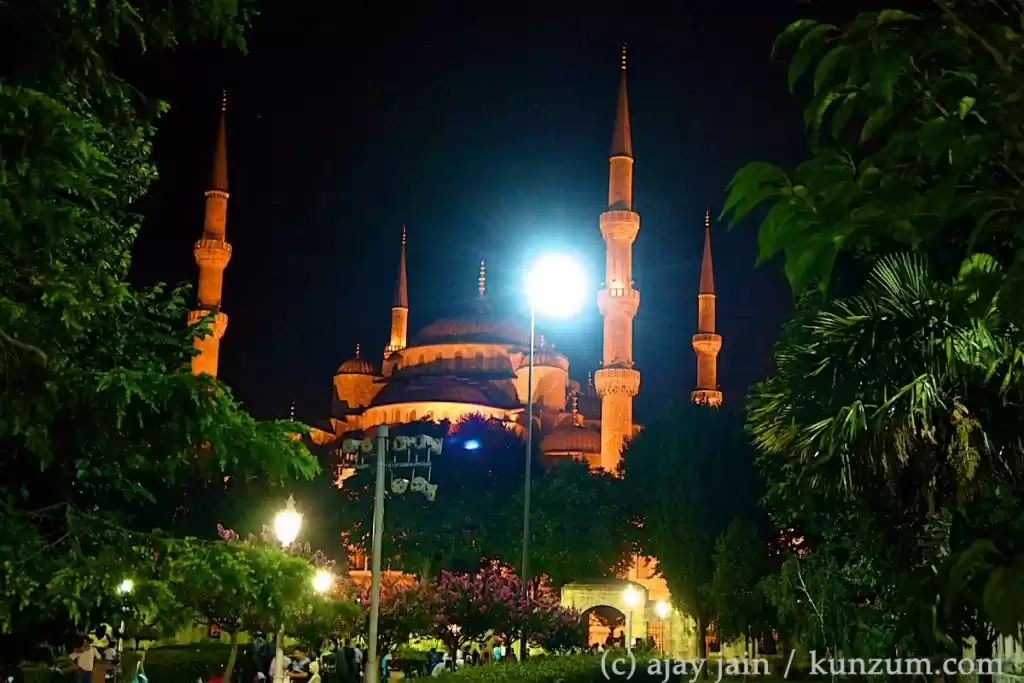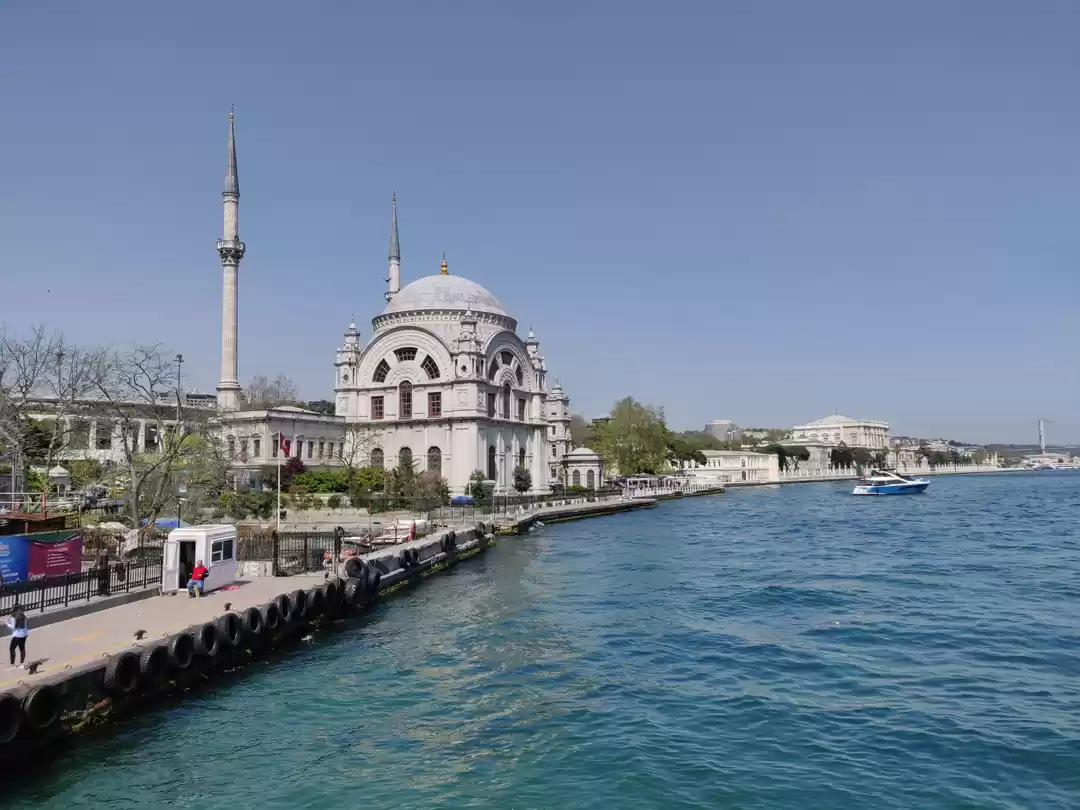If you are looking for a place that combines history, culture, and beauty in Istanbul, look no further than the Hippodrome. This ancient and modern landmark is located in the heart of the city, in the Sultanahmet Square, and offers a glimpse into the glorious and turbulent past of Istanbul. From the Roman chariot races to the Ottoman ceremonies, the Hippodrome has witnessed many events that shaped the history of this city. Today, it is a popular tourist attraction, with four surviving monuments that showcase the diverse influences and periods of Istanbul.
In this article, we will guide you through the Hippodrome Istanbul, its history, its monuments, and its surroundings. We will also give you some tips and recommendations on how to make the most of your visit, and what other attractions and activities you can enjoy nearby. Whether you are a history buff, a culture lover, or a curious traveler, you will find something to suit your interests and preferences in the Hippodrome Istanbul.
The Hippodrome of Constantinople: A History of Glory and Bloodshed
The Hippodrome of Constantinople, as it was originally called, was built in the 3rd century AD by the Roman emperor Septimius Severus, who wanted to make the city his new capital. The Hippodrome was modeled after the Circus Maximus in Rome, and was designed as a huge arena for chariot races and other spectacles. It could accommodate up to 100,000 spectators, who cheered for their favorite teams and drivers. The Hippodrome was also the center of political, social, and religious life in the city, as it was where the emperors, the nobles, and the clergy displayed their power and authority, and where the people expressed their opinions and grievances.

The Hippodrome was the scene of many historical events, such as the Nika riots in 532 AD, when a massive uprising against Emperor Justinian I erupted, and was brutally suppressed by his general Belisarius, who killed thousands of rebels in the Hippodrome. The Hippodrome was also the target of the Fourth Crusade in 1204, when the Latin invaders sacked and looted the city, and destroyed many of the monuments and relics in the Hippodrome. The Hippodrome survived the Ottoman conquest in 1453, and was converted into a ceremonial square by Sultan Mehmed II, who renamed it as the At Meydani, or the Horse Square.
The Hippodrome continued to serve as a venue for royal and religious festivities, such as the circumcision of the princes, the accession of the sultans, and the holy days of Islam. The Hippodrome also witnessed some modern events, such as the Young Turk Revolution in 1908, when the constitutional monarchy was restored, and the Turkish War of Independence in 1923, when the Republic of Turkey was proclaimed.
The Hippodrome had a rectangular shape, with a long and narrow track, called the spina, running along its length. The spina was decorated with statues, obelisks, columns, and fountains, and had two turning points, called the metae, at each end. The spina also had a central platform, called the kathisma, where the emperor and his entourage watched the races and the events. The kathisma was connected to the Great Palace of Constantinople by a covered passage, called the sphendone, which curved around the southern end of the Hippodrome. The spectators sat in tiers of seats, called the carceres, that surrounded the track, and were divided into sections, called the maeniana, according to their social status and affiliation. The Hippodrome had four main gates, called the porta triumphalis, the porta regia, the porta mortis, and the porta veneta, which were used for the entrance and exit of the participants and the spectators.
The Monuments of the Hippodrome: A Legacy of Ancient Civilizations
The Hippodrome was adorned with many monuments and relics, that were brought from different parts of the ancient world, and represented the diverse cultural influences and historical periods of Istanbul. However, most of these monuments were either destroyed or removed over time, due to wars, earthquakes, fires, or thefts. Today, only four of them remain, and they are the main attractions of the Hippodrome. These are the Egyptian Obelisk, the Serpentine Column, the Walled Obelisk, and the German Fountain. Each of these monuments has its own story and significance, and they are worth a closer look and appreciation.

The Egyptian Obelisk
The Egyptian Obelisk is the oldest and the most impressive monument in the Hippodrome. It was originally erected in the 15th century BC by the pharaoh Thutmose III, in the temple of Karnak in Luxor, Egypt. It was made of pink granite, and had hieroglyphs and reliefs depicting the pharaoh’s victories and offerings to the gods. The obelisk was brought to Constantinople in the 4th century AD by the emperor Theodosius the Great, who wanted to embellish his new capital. The obelisk was cut into three pieces, and only the top third was transported to the Hippodrome, where it was placed on a marble base. The base had four panels, that showed scenes from the Hippodrome and the imperial court, such as the emperor watching the races, the chariots competing, the officials presenting gifts, and the people cheering. The obelisk stands 19.6 meters high, and is a remarkable example of ancient Egyptian art and engineering.
The Serpentine Column
The Serpentine Column is another ancient monument in the Hippodrome, that dates back to the 5th century BC. It was originally made of bronze, and consisted of three intertwined snake bodies, with three snake heads at the top. The column was a votive offering by the Greek city-states, who defeated the Persian army at the Battle of Plataea in 479 BC. The column was erected at the sanctuary of Apollo in Delphi, Greece, where it stood for over 800 years. The column was brought to Constantinople in the 4th century AD by the emperor Constantine the Great, who also wanted to decorate his new capital. The column was placed on a stone pedestal, and was used as a tripod for a golden bowl, that was later stolen or destroyed. The column was 8 meters high, and had an inscription with the names of the 31 Greek city-states that participated in the battle. The column also had some damage and alterations over time, such as the loss of the snake heads, which were either broken off by an earthquake, or cut off by a Polish nobleman, who took one of them as a souvenir. The remaining two heads are now displayed in the Istanbul Archaeological Museum.
The Walled Obelisk
The Walled Obelisk is the third monument in the Hippodrome, and the only one that was built in Constantinople. It was erected in the 10th century AD by the emperor Constantine VII Porphyrogenitus, who was a patron of arts and sciences. The obelisk was made of stone, and was covered with bronze plates, that had gilded decorations and inscriptions. The obelisk was 32 meters high, and had four sides, that showed scenes from the Hippodrome and the imperial life, such as the races, the ceremonies, the hunting, and the music. The obelisk also had a cross at the top, and a sphere at the bottom, that symbolized the Christian faith and the imperial power. The obelisk was stripped of its bronze plates in the 13th century, by the Latin crusaders, who melted them for coins. The obelisk was also damaged by earthquakes and fires, and lost its original appearance and splendor.
The German Fountain
The German Fountain is the fourth and the most recent monument in the Hippodrome, and the only one that was not originally intended for the Hippodrome. It was built in the late 19th century by the German emperor Wilhelm II, who visited Istanbul in 1898, and wanted to commemorate his friendship and alliance with the Ottoman sultan Abdulhamid II. The fountain was designed by a German architect, and was made of marble and stone, with a neo-Byzantine style. The fountain had a dome, that was supported by eight columns, and had mosaics and inscriptions. The fountain also had four spouts, that provided drinking water for the public. The fountain was inaugurated in 1901, on the 25th anniversary of the sultan’s accession to the throne. The fountain was a symbol of the German-Turkish relations in the late 19th century, and a gesture of goodwill and gratitude from the German emperor to the Ottoman sultan.
The Surroundings of the Hippodrome: A Treasure Trove of Attractions
The Hippodrome is not only a historical and cultural landmark, but also a treasure trove of attractions, that are nearby and offer a rich and diverse experience of Istanbul. Whether you want to admire the stunning architecture, explore the fascinating museums, or enjoy the vibrant atmosphere, you will find something to suit your taste and mood in the surroundings of the Hippodrome. Here are some of the attractions and activities that you can enjoy nearby, and some tips and recommendations on how to make the most of your visit.

The Blue Mosque
The Blue Mosque, or the Sultan Ahmet Mosque, is one of the most iconic and beautiful mosques in Istanbul, and in the world. It was built in the 17th century by Sultan Ahmet I, who wanted to rival the Hagia Sophia, and to leave a lasting legacy in the city. The mosque has six minarets, a distinctive feature that sets it apart from other mosques, and a blue-tiled interior, that gives it its popular name. The mosque has a symmetrical and harmonious design, with a main dome, eight secondary domes, and four semi-domes. The mosque is decorated with more than 20,000 ceramic tiles, that have floral and geometric patterns, and more than 200 stained glass windows, that create a stunning effect of light and color. The mosque also has calligraphic inscriptions, that feature verses from the Quran and the names of the prophet Muhammad and the first four caliphs.
The Blue Mosque is open to visitors every day, except during the five daily prayer times, when only Muslims are allowed to enter. The mosque is free of charge, but donations are welcome. Visitors are required to dress modestly, and to remove their shoes before entering. Women are also required to cover their hair with a scarf, which can be borrowed from the mosque. The mosque can be very crowded during the peak season, so it is advisable to visit early in the morning or late in the afternoon, to avoid the long queues and the noise. The mosque is also very beautiful at night, when it is illuminated by lights, and creates a magical atmosphere.
The Blue Mosque is a must-see attraction in Istanbul, and a masterpiece of Islamic architecture and art. It is a place where you can admire the beauty and the craftsmanship of the mosque, and also learn more about the history and the culture of the Ottoman Empire and Turkey.

The Hagia Sophia
The Hagia Sophia, or the Ayasofya, is another iconic and magnificent attraction in Istanbul, and in the world. It was built in the 6th century by the Byzantine emperor Justinian I, who wanted to create the most splendid and majestic church in Christendom. The Hagia Sophia was a marvel of engineering and design, with a huge dome, that was supported by four piers and forty ribs, and that seemed to float in the air. The Hagia Sophia was also a marvel of art and decoration, with mosaics, frescoes, marbles, and columns, that depicted scenes and figures from the Christian faith and the imperial life. The Hagia Sophia was the largest and the most important church in the Byzantine Empire, and the seat of the patriarch of Constantinople. The Hagia Sophia was also the scene of many historical events, such as the coronation of the emperors, the schism of the churches, and the fall of the empire.
The Hagia Sophia was converted into a mosque in the 15th century by the Ottoman sultan Mehmed II, who conquered the city and ended the Byzantine rule. The Hagia Sophia was modified and adapted to the Islamic worship, with the addition of minarets, mihrabs, minbars, and carpets. The Hagia Sophia was also decorated with calligraphic panels, that featured the names of Allah, Muhammad, and the first four caliphs, and the names of the sultans and their sons. The Hagia Sophia was the largest and the most prestigious mosque in the Ottoman Empire, and the inspiration for many other mosques, such as the Blue Mosque and the Suleymaniye Mosque. The Hagia Sophia was also the place where the sultans and the people prayed and celebrated the holy days of Islam.
The Hagia Sophia was turned into a museum in the 20th century by the Turkish republic, who wanted to preserve and showcase the heritage and the legacy of the Hagia Sophia. The Hagia Sophia was restored and renovated, with the removal of the plaster and the whitewash, that covered the original mosaics and frescoes. The Hagia Sophia was also opened to the public, and became one of the most visited and admired attractions in Istanbul and in the world. The Hagia Sophia is a unique and remarkable place, that reflects the history and the culture of the Byzantine and the Ottoman civilizations, and the coexistence and the dialogue of the Christian and the Islamic faiths.
The Hagia Sophia is open to visitors every day, except on Mondays, when it is closed. The entrance fee is 100 Turkish liras, or about 10 euros. Visitors can explore the various sections and exhibits of the Hagia Sophia, such as the nave, the galleries, the apse, the narthex, the vestibule, and the tombs. Visitors can also see the highlights of the Hagia Sophia, such as the dome, the mosaics, the frescoes, the calligraphic panels, the marble door, the wishing column, and the imperial loge. Visitors are advised to wear comfortable shoes, and to bring a flashlight, as some parts of the Hagia Sophia are dark and dim. Visitors are also advised to book their tickets online, and to visit early in the morning or late in the afternoon, to avoid the crowds and the heat.
The Hagia Sophia is a must-see attraction in Istanbul, and a masterpiece of Byzantine and Ottoman architecture and art. It is a place where you can marvel at the beauty and the grandeur of the Hagia Sophia, and also learn more about the history and the culture of Istanbul and Turkey.
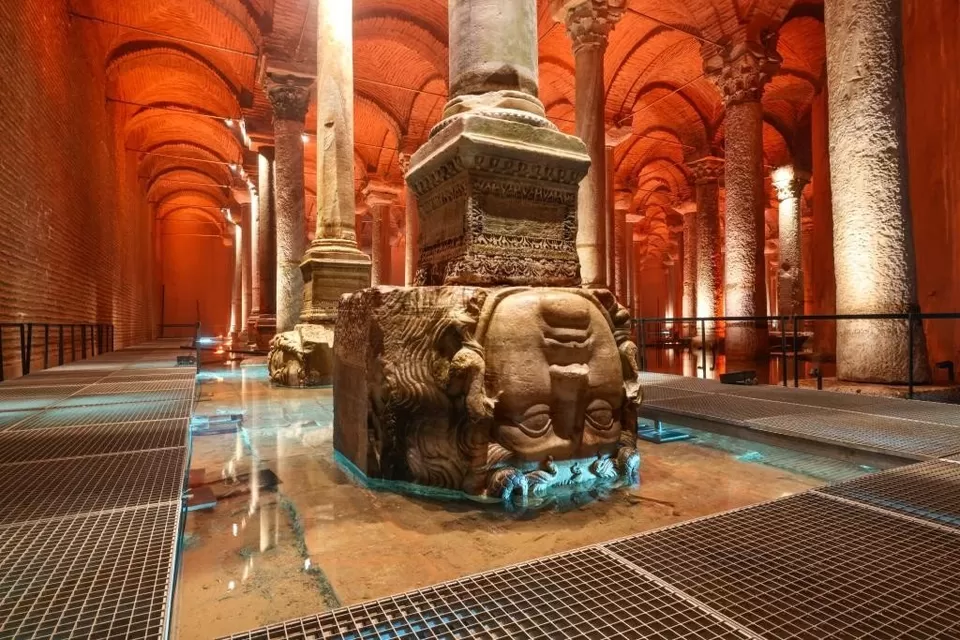
The Basilica Cistern
The Basilica Cistern, or the Yerebatan Sarnici, is a hidden and mysterious attraction in Istanbul, and a wonder of the underground world. It was built in the 6th century by the Byzantine emperor Justinian I, who wanted to provide water supply for the city and the palace. The cistern was constructed under a basilica, that was used as a public square and a market place. The cistern was a huge water reservoir, that had a capacity of 80,000 cubic meters, and that was filled with water from the Belgrade Forest, through a series of aqueducts and pipes. The cistern was also a remarkable engineering and architectural feat, with a vaulted ceiling, that was supported by 336 columns, that were arranged in 12 rows and 28 columns. The cistern was decorated with carvings and sculptures, that added to its beauty and charm. The cistern was used for centuries by the Byzantine and the Ottoman empires, and was also the source of many legends and stories, such as the one of the Medusa heads, that were said to turn people into stone.
The cistern was rediscovered and restored in the 20th century by the Turkish republic, who wanted to conserve and display the heritage and the legacy of the cistern. The cistern was also opened to the public, and became one of the most visited and admired attractions in Istanbul and in the world. The cistern is a unique and remarkable place, that offers a different and enchanting perspective of Istanbul, and that transports the visitors to another time and space.
The cistern is open to visitors every day, except on Tuesdays, when it is closed. The entrance fee is 20 Turkish liras, or about 2 euros. Visitors can walk on the wooden platforms, that are installed over the water, and admire the columns, the carvings, and the sculptures of the cistern. Visitors can also see the highlights of the cistern, such as the Medusa heads, that are placed upside down and sideways under two columns, and that are believed to be from a Roman temple or a palace. Visitors can also see the Hen’s Eye column, that has a tear-shaped carving, that is said to represent the tears of the slaves who built the cistern. Visitors are advised to wear warm clothes, and to bring a camera, as the cistern is cold and humid, and has a dim and atmospheric lighting. Visitors are also advised to book their tickets online, and to visit early in the morning or late in the afternoon, to avoid the crowds and the noise.
The cistern is a must-see attraction in Istanbul, and a masterpiece of Byzantine engineering and art. It is a place where you can enjoy the beauty and the mystery of the cistern, and also learn more about the history and the culture of Istanbul and Turkey.
The Topkapi Palace
The Topkapi Palace, or the Topkapi Sarayi, is the last and the most splendid attraction in the surroundings of the Hippodrome, and a jewel of the Ottoman Empire. It was built in the 15th century by the sultan Mehmed II, who wanted to establish his new residence and his new capital in the city. The palace was expanded and embellished by the successive sultans, who added new buildings, courtyards, gardens, and museums. The palace was the home and the office of the sultans and their families, and the seat of the government and the administration. The palace was also the center of the Ottoman culture and civilization, and the repository of the Ottoman treasures and relics. The palace was the heart and the soul of the Ottoman Empire, and the witness of its rise and fall.
The palace was turned into a museum in the 20th century by the Turkish republic, who wanted to preserve and showcase the heritage and the legacy of the palace. The palace was also opened to the public, and became one of the most visited and admired attractions in Istanbul and in the world. The palace is a unique and remarkable place, that reflects the history and the culture of the Ottoman Empire and Turkey, and the splendor and the elegance of the Ottoman art and architecture.
The palace is open to visitors every day, except on Tuesdays, when it is closed. The entrance fee is 100 Turkish liras, or about 10 euros, for the palace, and an additional 70 Turkish liras, or about 7 euros, for the harem. Visitors can explore the various sections and exhibits of the palace, such as the four courtyards, the imperial council, the imperial treasury, the holy relics, the imperial kitchens, and the imperial library. Visitors can also see the highlights of the palace, such as the gate of salutation, the tower of justice, the pavilion of the holy mantle, the throne room, the circumcision room, and the Baghdad pavilion. Visitors are advised to wear comfortable shoes, and to bring a camera, as the palace has many beautiful and photogenic views and details. Visitors are also advised to book their tickets online, and to visit early in the morning or late in the afternoon, to avoid the crowds and the heat.
The palace is a must-see attraction in Istanbul, and a masterpiece of Ottoman architecture and art. It is a place where you can enjoy the beauty and the luxury of the palace, and also learn more about the history and the culture of the Ottoman Empire and Turkey.
A Wrap-up of the Hippodrome Istanbul
The Hippodrome Istanbul is a historical and cultural landmark, that offers a unique and diverse experience of Istanbul. It is a place where you can admire the ancient and modern monuments of the Hippodrome, and also explore the other attractions and activities that are nearby. Whether you are interested in history, culture, or beauty, you will find something to suit your taste and mood in the Hippodrome Istanbul. The Hippodrome Istanbul is a place that combines the past and the present, the east and the west, and the sacred and the secular, and that reflects the essence and the spirit of Istanbul.
We hope this article has helped you to learn more about the Hippodrome Istanbul, and to plan your visit to this amazing place. If you have any questions or feedback, please let us know in the comments below.
And if you liked this article, please share it with your friends and family, who might also be interested in visiting the Hippodrome Istanbul. Thank you for reading, and have a great time in Istanbul!

